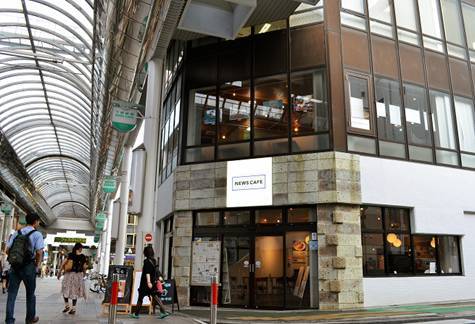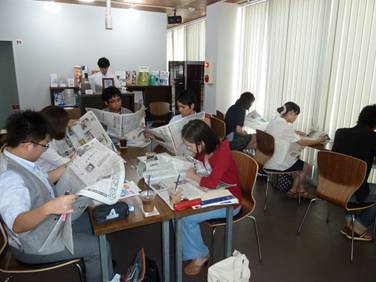In today's internet age, newspapers are becoming more deeply embedded in people's lives in ways never seen before.
It's not widely known, but major international newspaper websites feature substantial matchmaking sections. Leading global publications like the New York Times and Washington Post in the US, the Guardian and Telegraph in the UK, and Le Figaro in France offer matchmaking support content. Even newspapers in the Middle East and India have such sections. In India, a multi-ethnic nation, seeking marriage partners through newspaper ads was a longstanding custom. Matchmaking sites represent an evolution of this practice.
 |
The Washington Post's "Dating Lab" site.
"Over five years of operating the site, we've accumulated expertise in matching couples,"
The site introduces couples who met through it.
|
Once marriage is decided, the next step is the wedding ceremony. Here too, many international newspaper sites go beyond practical wedding-related content to feature personal wedding stories. These are presented like engaging newspaper articles, detailing everything from how the couple met and memorable locations to honeymoon plans. Some even include videos showcasing the wedding ceremony. Newspapers provide one-stop support, accompanying couples from the day they decide to marry until after the ceremony.
Newspapers also provide platforms for information exchange among people with similar conditions under sections like "Patient Voices." At life milestones—moving, changing jobs, traveling, buying or selling used cars, home renovations, or death—newspapers offer curated information gathering spaces, becoming part of people's lives.
What these initiatives share is that they all operate in areas where trust in the information source is paramount. While similar sites and services exist, the fact that they are provided by newspapers likely gives people a sense of security. Even in hobby areas like wine and gardening, newspapers offer not only rich article content and reader interaction but also shops branded under the newspaper name. This creates a cohesive community of enthusiasts. Compared to the print-only era, the position of newspapers from the consumer's perspective has transformed significantly.
Newspaper companies' efforts to connect with readers extend beyond the web.
The New York Times' cruise tours to destinations like Latin America feature live commentary from the paper's renowned columnists and reporters onboard as a key selling point. News cafes operated by Canadian newspapers are pioneering examples of bridging the physical gap between publishers and readers. These cafes house editorial studios where readers and journalists can interact. Reporters conduct editorial work while engaging with readers' direct feedback, while readers gain a tangible sense of how news is made. The food rivals that of a full-service restaurant, and occasional concerts are held on-site, presenting a vision of the newspaper company as an integral community member. Similar cafes exist in the US, and in Singapore, a sports newspaper operates a sports bar.
In Japan, Shimotsuke Shimbun made headlines two years ago by opening a permanent news cafe with a branch office attached. Beyond allowing dining while reading the paper, it hosts various events and serves as a central downtown gathering spot. This initiative won the Japan Newspaper Publishers & Editors Association's 2013 Newspaper Association Award (Management & Operations category).
 |
Shimotsuke Shimbun opened NEWS CAFE in June 2012
NEWS CAFE opened in the central business district of Utsunomiya City, Tochigi Prefecture, in June 2012
Its catchphrase is "Make news your regular hangout."
While enjoying coffee, patrons can engage with the news, and it also serves as a meeting place for readers and residents.
The first and second floors house the café, while the third floor is the "Utsunomiya Downtown Branch Office."
|
 |
The "Shimotsuke Newspaper Workshop" held on the 2nd floor
Shimotsuke Shimbun staff taught young people how to read the newspaper.
|
Furthermore, Japan's newspaper home delivery system—so commonplace it often goes unnoticed—itself forms a vital social infrastructure and point of contact with residents. Nationwide, there are approximately 18,000 newspaper retailers. As society increasingly relies on the internet, new value is being found in the act of the same person visiting daily. Many subscribers prefer paying monthly in person rather than through automatic transfers. Delivery personnel have even saved the lives of elderly individuals living alone by noticing signs of distress. Initiatives are emerging to utilize this delivery network for corporate product sampling and to position newsstands as hubs for diverse community activities.
Contact points built on consumer trust are growing increasingly important. If the distance between newspapers and readers continues to shrink, it will create more opportunities for businesses to communicate directly with consumers.




